
Taking a Bath in Japan
Part 1: The spiritual dimension of bathing
Bathing can be simply a matter of washing dirt off the body; on the other hand, it can have spiritual components also. One Japanese term is misogi, which means ritual purification with water. The process is important both in Shintoism and Buddhism.
In Shinto there is what is termed misogi, which is purification by water. This is further sub-divided into bath purification, hand-washing purification, and saltwater purification. During the Japanese bon , the dead are thought to return to their homes. People will then visit their homes and the gravesites of their ancestors. One ritual when visiting the grave is to wash the tombstone, which can be simply pouring water over the gravestone or actually brushing and cleaning away any dirt that has gotten on the stone.
The process of bathing cleans the body, but it also can serve to refresh and relax the body. It is also considered to do the same to the kokoro, or person's spirit or heart. Thus, the bath is good for both the physical well-being and the psychological/spiritual well-being of the person.
That bathing is associated with ritual is actually recorded in The History of the Kingdom of Wei, notes that ritual bathing was done by the Japanese as early as 297 C.E., right at the boundary between the Yayoi and Tumulus Periods. This bathing was associated with cleansing the body after a funeral.
Another reference is the Izumo Fudoki which tells of people using Tamazjuri hot spring near Izumo for bathing and healing as early as 737 C.E.
Buddhism had its own effect on bathing. The large Buddhist temple compounds had one building for purification of the monks and washing the Buddha statues. As time went on the common people were invited to use the baths. As their popularity increased, bath houses specifically for the common people opened. Some people who were rulers and some rich men sponsored their own public baths, supposedly to show their piety.
There is even the story of Empress Komyo in the 8th century who vowed to personally wash a thousand beggars at the bath at Horyuji Temple in Nara. The Empress was the consort of Emperor Shomu who strongly supported the spread of Buddhism in Japan.
The people at this time wore a white robe called a yukatabira in the bath. Later, the robes were worn after the bath and became quite popular, especially in hot weather. Their name was shorted to yukata and they are the single most popular form of kimono in Japan today, appearing in a variety of designs and colors. (My own page on the yukata is here .
The clothing worn than changed during the Kamakura period when men worn a loincloth (fudoshi) which covered their genitals and women wore a wraparound skirt called a koshimaki. Finally, during the Edo Period, people began to bath fully nude.
Part 2: The bathing procedure
In both the private home and the public bath the actual bathing procedure is the same. In the U.S., people who take a bath run water into the tub, climb in and wash, then finish and drain the water from the bathtub. In effect, the person ends up washing themselves in what has become dirty water. A shower, of course, overcomes this limitation but does not allow the soaking of the body that can prove relaxing.
In Japan, the procedure is very different. When you enter the bathing place you do not immediately enter the bathtub/pool. You sit on a stool and douse yourself with hot water. You then clean yourself thoroughly, shampoo your hair if you wish, and rinse off. Only after you are clean do you then enter the tub/pool to relax. This allows a number of people to use the same tub since the water in the tub does not get dirty as quickly.
Part 3: Bathing in Japanese homes
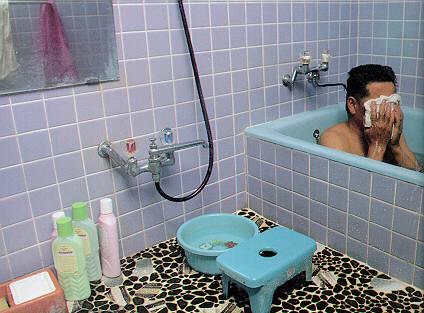
In the U.S. we take a bath or a shower, and we immediately run into one major difference between Japanese and American homes. In Japan most homes have the toilet area separate from the bathing area, unlike the U.S. where, usually, both are located in the same room (the Japanese method, in my opinion, being much better than ours, at least in this case).
In the Japanese home, the bath is usually taken in the evening. It's not unusual for young children to bath with their parents, and the entire washing/soaking/relaxing process can take thirty minutes. Teenagers and adults, especially those without children, bath alone, their bath sometimes taking as long as an hour.
Some people believe that parents bathing with children helps to strengthen the parent-child bond. Some parents also use the bathtime to help teach young children things like multiplication tables. Children are also taught the proper methods to use in bathing, especially girls who learn how to hold themselves and use a towel in order to conceal their genitals.
In households that are still very traditional in nature, there is an order in taking baths in the home. The head of the household baths first; any other males in the household then bath, in order of descending age; the females bath, also in descending age order.
Part 4: Mixed Bathing
Another very major difference between the Japanese society and American society was the openness to mixed bathing. Although some bathhouses were divided specifically into male and female sections, many others allowed mixed bathing of both sexes. Mixed bathing was written about as early the 7th century. Again, during the Edo Period the government tried to stop the mixed bathing, with some success at least in Edo. In 1869 the government of the Meiji Period outlawed mixed bathing. This was not in response to anything desired by the Japanese people but was done to present a more "acceptable" public image to the outside world (and the outside world's hangups about anything to do with sex).
Mixed bathing still occurs in Japan but has diminished considerably in popularity. It's generally now limited to therapeutic resorts, places like hot springs
Mixed bathing is more popular with men than with women. There is also a difference in the way the genitals are covered when women bath together as compared to when women use a mixed bath.
There will often be a small towel that will be placed on their head while soaking. This towel can be used to cover the genitals when entering and exiting the bath itself. Since women have two different areas to be covered, the problem is somewhat more complicated for them. Several solutions arise.
Several solutions a rise. One is to wear a swimsuit when bathing. This is the least acceptable of the choices since the person cannot really wash themselves well before they enter the bath, and thus they will be perceived as still being dirty when entering the bath.
Another solution is to carry a towel that can be held in front of the body, covering both areas at the same time. The third solution is to wrap one towel around the groin area and a second towel around the breasts. Young women and girls tend to be more conservative about covering their genitals than do older women. Some women will also be very careful of their body postures, using the positioning of their body to de-emphasize the genitals.
With both men and women, though, there will be times when the genitals are momentarily exposed. This is not viewed with the shocked reaction that we would expect in the U.S. It's just considered something that happens and nothing to get upset about.
The question arises, naturally, about perverts. In Ranma 1/2, for example, Happosai is a really old martial arts expert who has carried perversion quite far, stealing panties and bras from women whenever he can and groping women at every opportunity. There will be an occasional pervert in the Japanese mixed bath, people who tend to either basically flaunt their genitals or people who are totally careless about exposing their genitals.
Such people will inevitably be considered rude and disgusting. There are also those who stare at the other people and that, also, is considered inappropriate behavior. This does not mean that there is no looking or commenting at all; rather, it's just not done in an offensive manner.
Part 5: Public bath houses

Diagram of a typical Japanese public bathhouse.
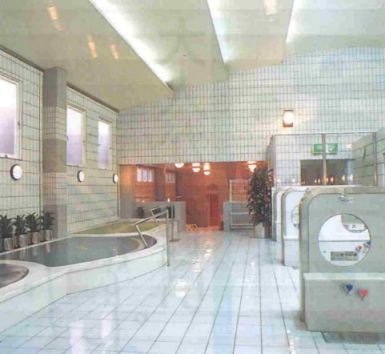
In the U.S. we take a bath or a shower. If we take a bath we run water in the tub, get in and soak a bit, wash off and let the water then drain out.
In Japan it's an entirely different (and in my opinion rather sensible) approach to bathing. Let's take as an example a public bath house. Most of these in Japan are now single-sex bathhouses, although a few are still around where both sexes are admitted. Apparently these latter ones have some kind of divider in the middle of the bathing area so the men and women are not actually using the exact same area at the same time.

You pay the attendant the bathhouse charge and then go into a room where you take off your clothes and get a small towel and then enter the bath proper. There will be a tub/pool/whatever of very hot water but you don't get into it and wash as you do in the U.S.
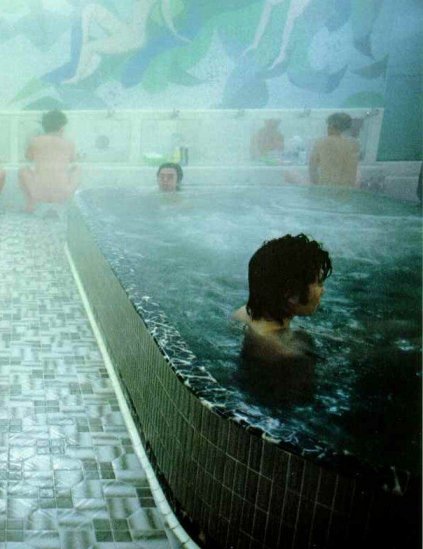
Instead, you have a small stool to sit on and a bucket, You get some of the hot water and douse yourself and use your soap/whatever to do the actual washing part outside of the tub. Only after washing yourself thoroughly do you then rinse off again and get into the tub, primarily to soak and relax.
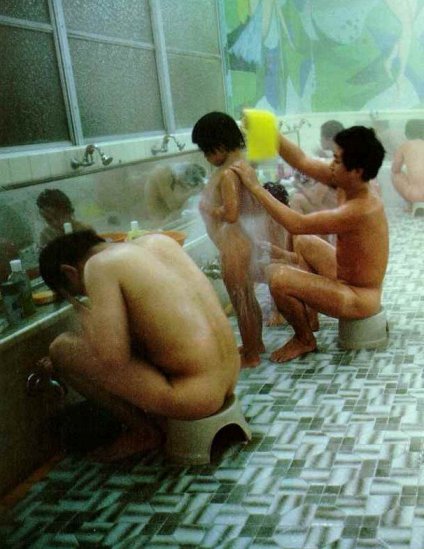
Main Index
Japan main page
Japanese-American Internment Camps index page
Japan and World War II index page
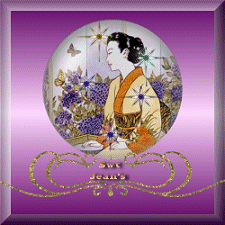
|